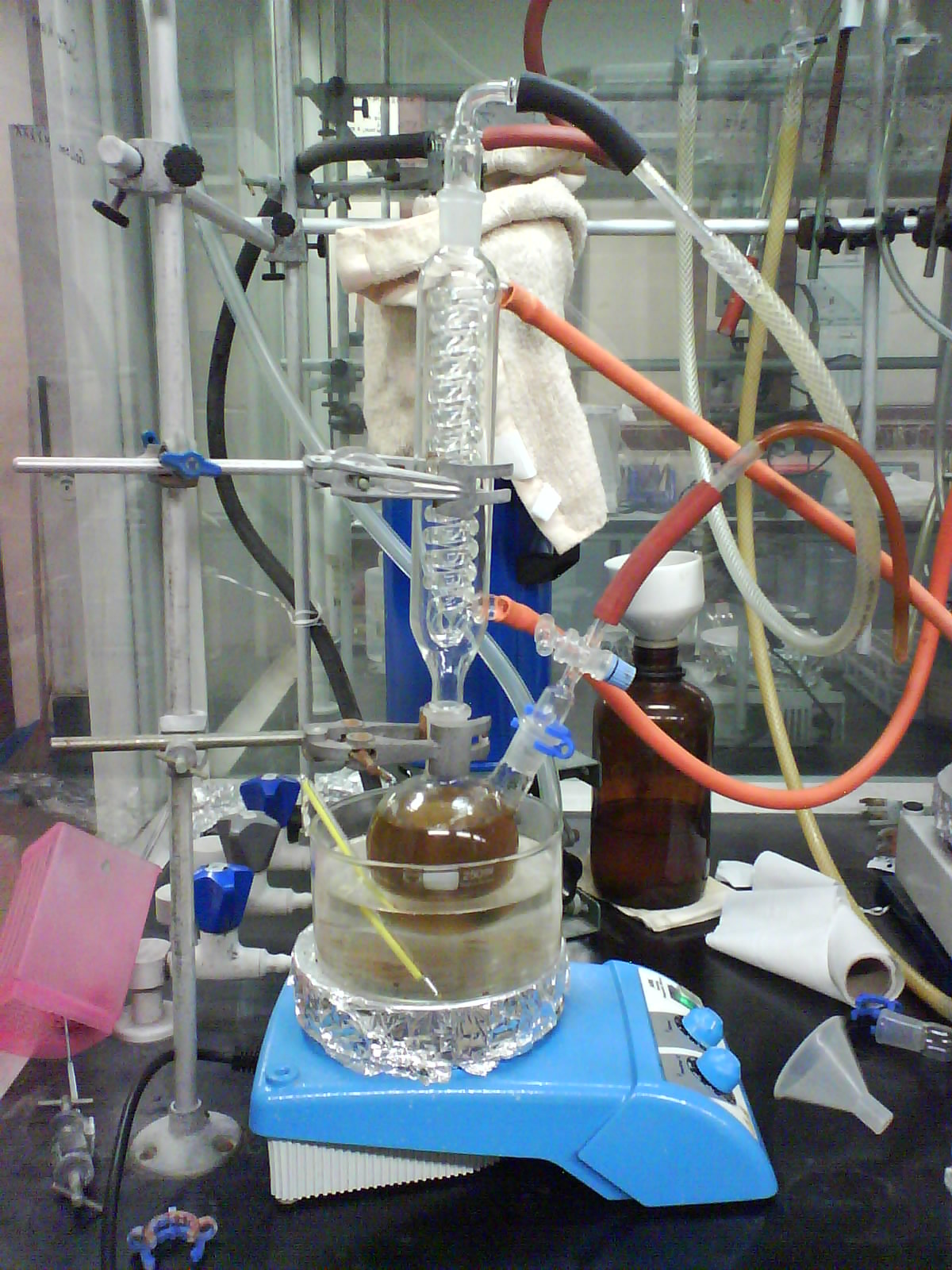Ketyl on:
[Wikipedia]
[Google]
[Amazon]

 A ketyl group in
A ketyl group in  Ketyls can be formed as
Ketyls can be formed as

 A ketyl group in
A ketyl group in organic chemistry
Organic chemistry is a subdiscipline within chemistry involving the science, scientific study of the structure, properties, and reactions of organic compounds and organic matter, organic materials, i.e., matter in its various forms that contain ...
is an anion
An ion () is an atom or molecule with a net electrical charge. The charge of an electron is considered to be negative by convention and this charge is equal and opposite to the charge of a proton, which is considered to be positive by conven ...
radical
Radical (from Latin: ', root) may refer to:
Politics and ideology Politics
*Classical radicalism, the Radical Movement that began in late 18th century Britain and spread to continental Europe and Latin America in the 19th century
*Radical politics ...
that contains a group R2C−O•. It is the product of the 1-electron reduction of a ketone.
Another mesomeric structure has the radical position on carbon and the negative charge on oxygen.
:radical anion
In organic chemistry, a radical anion is a free radical species that carries a negative charge. Radical anions are encountered in organic chemistry as reduced derivatives of polycyclic aromatic compounds, e.g. sodium naphthenide. An example of a ...
s by one-electron reduction
Redox ( , , reduction–oxidation or oxidation–reduction) is a type of chemical reaction in which the oxidation states of the reactants change. Oxidation is the loss of electrons or an increase in the oxidation state, while reduction is ...
of carbonyl
In organic chemistry, a carbonyl group is a functional group with the formula , composed of a carbon atom double bond, double-bonded to an oxygen atom, and it is divalent at the C atom. It is common to several classes of organic compounds (such a ...
s with alkali metal
The alkali metals consist of the chemical elements lithium (Li), sodium (Na), potassium (K),The symbols Na and K for sodium and potassium are derived from their Latin names, ''natrium'' and ''kalium''; these are still the origins of the names ...
s. Sodium and potassium metal reduce benzophenone in THF
Tetrahydrofuran (THF), or oxolane, is an organic compound with the formula (CH2)4O. The compound is classified as heterocyclic compound, specifically a cyclic ether. It is a colorless, water-miscible organic liquid with low viscosity. It is ma ...
solution to the soluble ketyl radical. Ketyls are also invoked as intermediates in the pinacol coupling reaction.
Reactions
Water
The ketyl radicals derived from the reaction ofsodium
Sodium is a chemical element; it has Symbol (chemistry), symbol Na (from Neo-Latin ) and atomic number 11. It is a soft, silvery-white, highly reactive metal. Sodium is an alkali metal, being in group 1 element, group 1 of the peri ...
and benzophenone
Benzophenone is a naturally occurring organic compound with the formula (C6H5)2CO, generally abbreviated Ph2CO. Benzophenone has been found in some fungi, fruits and plants, including grapes. It is a white solid with a low melting point and ros ...
is a common laboratory desiccant
A desiccant is a hygroscopic substance that is used to induce or sustain a state of dryness (desiccation) in its vicinity; it is the opposite of a humectant. Commonly encountered pre-packaged desiccants are solids that absorb water. Desiccant ...
. Ketyls react quickly with water, peroxides, and with oxygen. Thus, the deep purple coloration qualitatively indicates dry, peroxide-free, and oxygen-free conditions. The method for drying is still popular in many laboratories due to its ability to produce such pure solvent quickly. An alternative option for chemists interested only in water-free solvent is the use of molecular sieves
A molecule is a group of two or more atoms that are held together by attractive forces known as chemical bonds; depending on context, the term may or may not include ions that satisfy this criterion. In quantum physics, organic chemistry ...
. This is a much safer method than using an alkali metal still, produces solvent as dry as sodium-ketyl (though not as dry as potassium, or potassium-sodium alloy) but takes longer.
Oxygen
Sodium benzophenone ketyl reacts with oxygen to givesodium benzoate
Sodium benzoate also known as benzoate of soda is the sodium salt of benzoic acid, widely used as a food preservative (with an E number of E211) and a pickling agent. It appears as a white crystalline chemical with the formula C6H5COONa.
Pro ...
and sodium phenoxide
Sodium phenoxide (sodium phenolate) is an organic compound with the formula NaOC6H5. It is a white crystalline solid. Its anion, phenoxide, also known as phenolate, is the conjugate base of phenol. It is used as a precursor to many other organic ...
.
As a reducing agent
Potassium-benzophenone ketyl is used as a reductant for the preparation of organoiron compounds.Further reduction
When excess alkali metal is present, benzophenone ketyl may be reduced to the ketone dianion, resulting in a color transformation from deep blue to purple: :See also
*Air-free technique Air-free techniques refer to a range of manipulations in the chemistry laboratory for the handling of compounds that are air-sensitive. These techniques prevent the compounds from reacting with components of air, usually water and oxygen; less com ...
* Benzophenone radical anion
References
{{Reflist Functional groups Free radicals Anions